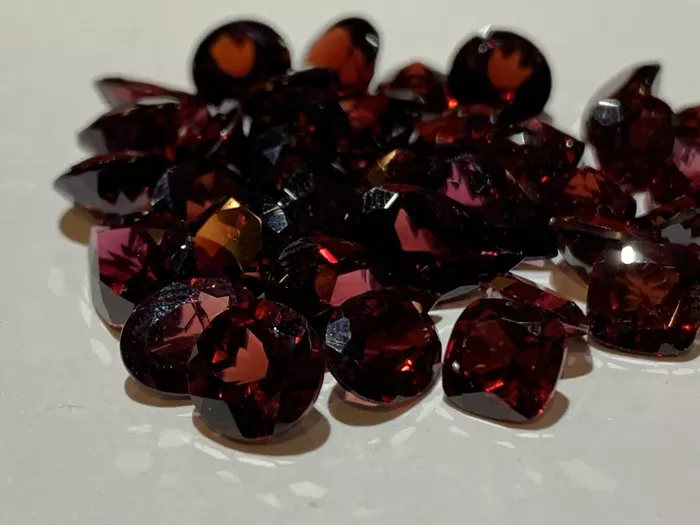Garnet, an enchanting gemstone admired for its beauty and versatility, is composed of a complex arrangement of minerals that contribute to its vibrant colors and unique properties. In this article, we will delve into the elemental composition of garnet, exploring the minerals that form this captivating gem. From the fiery reds to the deep greens, join us on a journey to uncover the intricate makeup of garnet and gain a deeper understanding of its mineralogical composition.
Before we explore the minerals within garnet, let’s begin by gaining a comprehensive understanding of this remarkable gemstone. Garnet belongs to a family of silicate minerals and is available in a wide range of colors, including red, orange, yellow, green, brown, and even rare blue hues. Each color variation represents a specific type of garnet, with each type having a distinct mineral composition.
Minerals in Garnet: A Multifaceted Composition
1. Almandine Garnet:
Almandine garnet, known for its deep red hues, is the most common type of garnet. It consists primarily of iron (Fe) and aluminum (Al) silicates, with traces of other elements such as calcium (Ca), magnesium (Mg), and manganese (Mn). The chemical formula for almandine garnet is Fe₃Al₂(SiO₄)₃.
2. Pyrope Garnet:
Pyrope garnet is renowned for its rich, dark red color. It is composed of magnesium (Mg) and aluminum (Al) silicates, with the chemical formula Mg₃Al₂(SiO₄)₃. Pyrope garnet can also contain traces of calcium (Ca), chromium (Cr), and iron (Fe), which contribute to its unique hues.
3. Spessartine Garnet:
Spessartine garnet is characterized by its vibrant orange to reddish-brown colors. It primarily consists of aluminum (Al) and manganese (Mn) silicates, with the chemical formula Mn₃Al₂(SiO₄)₃. This type of garnet can also contain traces of calcium (Ca) and iron (Fe), influencing its overall appearance.
4. Grossular Garnet:
Grossular garnet exhibits a diverse range of colors, including green, yellow, brown, and even rare blue variations. Its composition primarily comprises calcium (Ca) and aluminum (Al) silicates, with the chemical formula Ca₃Al₂(SiO₄)₃. Grossular garnet can also contain traces of iron (Fe) and manganese (Mn).
5. Andradite Garnet:
Andradite garnet is known for its green, yellow, or brown colors, with variations such as demantoid garnet displaying exceptional brilliance. It consists primarily of calcium (Ca) and iron (Fe) silicates, with the chemical formula Ca₃Fe₂(SiO₄)₃. Andradite garnet can also contain traces of titanium (Ti) and chromium (Cr).
Geological Occurrence and Crystal Structure
Garnet forms in various geological environments, including metamorphic rocks such as schist and gneiss, as well as igneous rocks like granite and basalt. Its crystal structure belongs to the cubic system, characterized by a three-dimensional arrangement of atoms. This crystal structure contributes to the gem’s durability and allows for the formation of its intricate facets.
Practical Applications and Uses
Beyond its aesthetic appeal, garnet’s unique mineral composition and physical properties make it valuable in various industries. It is widely used as an abrasive material for sandpaper, waterjet cutting, and polishing applications. Garnet is also employed in water filtration systems, as a gemstone in jewelry, and even in scientific research.
Conclusion:
As we conclude our exploration of the minerals within garnet, we have unveiled the complex composition that contributes to the gemstone’s captivating allure. From the iron-rich almandine garnet to the manganese-infused spessartine garnet, each type possesses its own distinct mineralogical signature. By understanding the elemental makeup of garnet, we gain a deeper appreciation for its beauty, versatility, and wide range of applications. So, whether you admire garnet as a gemstone or harness its abrasive properties in industrial settings, the knowledge of its mineral composition enhances our understanding of this remarkable gem.
Related topics:
- Ruby vs Garnet: Which Is More Expensive?
- Who should not wear garnet stone: A Quick Guide
- Who should wear garnet stone: A Comprehensive Guide


